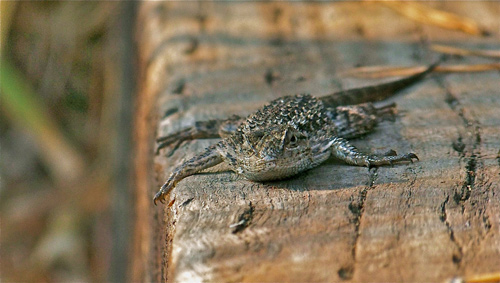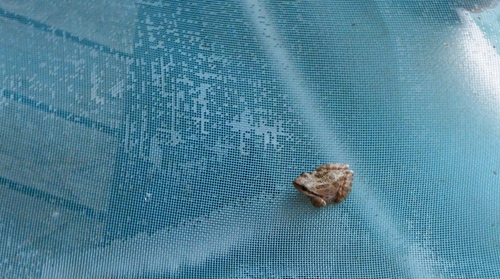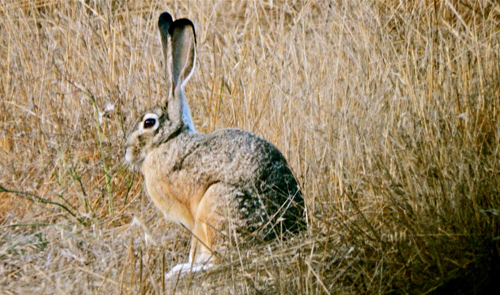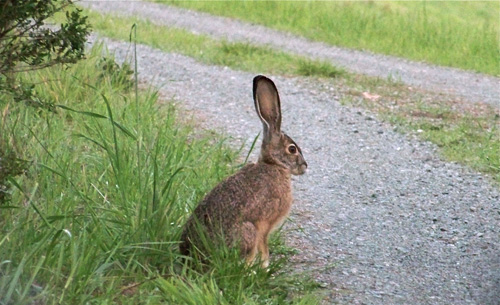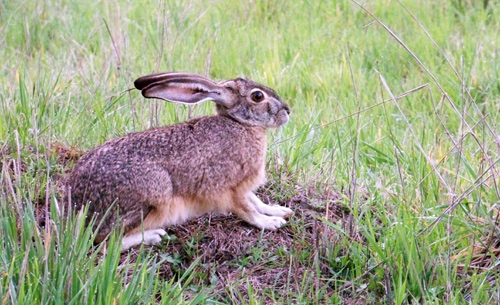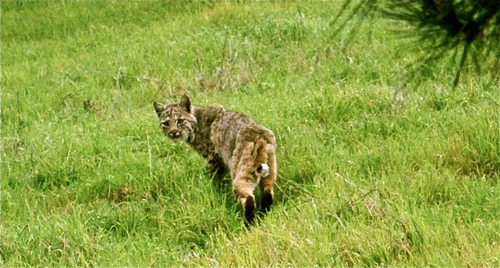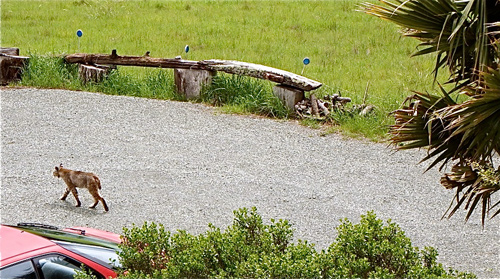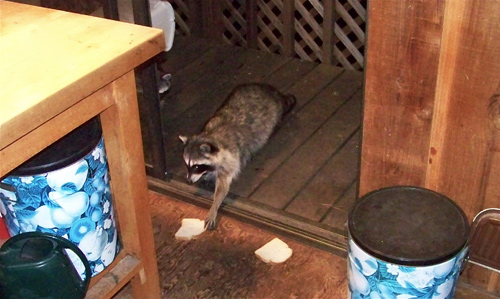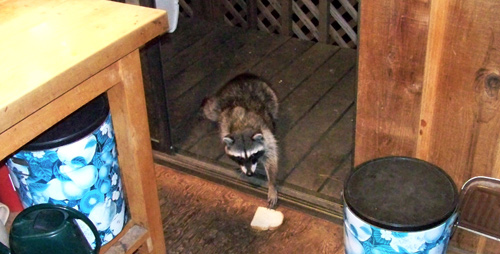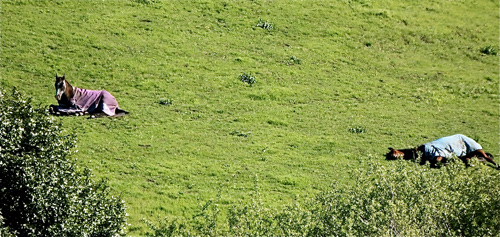Entries tagged with “jackrabbits”.
Did you find what you wanted?
Fri 7 Jan 2022
Caveat lectorem: When readers submit comments, they are asked if they want to receive an email alert with a link to new postings on this blog. A number of people have said they do. Thank you. The link is created the moment a posting goes online. Readers who find their way here through that link can see an updated version by simply clicking on the headline above the posting.
This is a belated review of an entertaining linguistic book, A Charm of Goldfinches and Other Wild Gatherings. It was originally published five years ago by Ten-Speed Press. My wife Lynn gave it to me for Christmas. The author, Matt Sewell, is a Canadian ornithologist, illustrator, and artist who has exhibited in London, Manchester, New York, Tokyo, and Paris.

As most of us know, a group of geese is called a “gaggle” but if the geese are flying in formation, the proper term is “skein,” writes Sewell. The term “comes from an old French word for ‘V’ Formation.”

Some group names are grim but accurate. Here a “wake” of vultures divvy up a skunk killed by an owl.

Virtually every night at Mitchell cabin we can hear a “band” of coyotes howling.
Groups of coyotes are called “bands” although to my mind, “choirs” would be more accurate. Sewell notes that “outside of their guarded family units, coyotes hang together in unrelated gangs, scavenging and doing whatever coyotes do.”

A “sulk” of foxes atop a shed at Toby’s Feed Barn. These were spotted by postal staff outside a postoffice window.

A “plague” of rats. Given my recent experience with roof rats, I would second the group name “plague.” Roof rats found their way into my car’s engine compartment around Christmas and chewed wiring, piled up debris, and damaged the car’s computer. The final tab at garages in Point Reyes Staton and Santa Rosa to repair the damage came to more than $2,500.

A “trip” of rabbits.
Sewell frequently indulges his ironic sense of humor. Describing how groups of rabbits came to be called “trips,” Sewell writes: “Now, some of you may be thinking: the trip would be to follow the white rabbit down the rabbit hole. Â Sadly not: this term is from the 15th century, not the 1960s Jefferson Airplane lyric, or even Lewis Carroll’s Alice in Wonderland, which inspired the song. It is, in fact, about as psychedelic as a turnip patch.
“A colony of rabbits is a flighty bunch, not surprisingly, as the whole world is their enemy…. They are rarely safe for long, not when they’re hunted by hawks and owls, weasels, foxes, domestic pets, and humans, to name just a few.”
As noted previously, “jackrabbit” is short for “jackass rabbit,” a nickname it got because of its ears.
A “ lounge” of lizards. This is a blue-belly lizard on the wall of our cabin.
lounge” of lizards. This is a blue-belly lizard on the wall of our cabin.
Lizards are cold-blooded “so they need to warm up from the sun or on warm stones.”
“It’s this lounging that gets them into trouble though as lizards are easy prey in this laid-back state.
“If they are cruelly snatched, lizards at least have a last-gasp mechanism for freedom: they can release their tail, which will wriggle around in the predator’s mouth, confusing the daylights out of it while the lizard makes a dash for the undergrowth.”
I hope it gets there safely.
Mon 22 Sep 2014
The autumnal equinox of 2014 is upon us. Fall has begun. If we were in Great Britain, still including Scotland (hip, hip, hooray), we would probably say that “autumn” has begun. Transatlantic linguistic differences, you know, old chap. Sort of like “truck” v. “lorry.”
Until the early 1600s, the English name for the season was “harvest,” but as more and more people moved off the farm and into cities where there was no harvesting, they began to call the season “fall of the leaf.” After all, it’s the time of year when leaves fall from trees. Eventually, the phrase was shortened to just “fall.”
From what I read, the word “autumn” is at least three centuries older, but its origins are unclear. However, the French word for “autumn” is “automne,” so that may be a clue.

The cold-blooded countenance of a Western Fence Lizard.
The mostly dry, mostly sunny days of summer’s end were welcomed by a cold-blooded crew of Western Fence Lizards that daily warm themselves on the railroad-tie steps leading up to Mitchell cabin.
I’ve seen as many as three lizards at a time on the steps. Some scoot out of sight the moment they feel the vibration of my tread, but some don’t move at all, forcing me to be careful I don’t step on them. Actually, I don’t think that’s likely. Their staying still as long as possible is probably a form of camouflage they would abandon if I got too close.

The Western Fence Lizard diet mostly consists of insects and spiders.
Their nickname is “blue bellies” because of the color of their undersides, which can be seen when the males do pushups. It’s their equivalent of pumping iron in order to impress females and intimidate other males.

A Pacific tree frog right after I rescued it from my hot tub.
When I opened the lid of my hot tub Thursday to check the amount of chlorine and other chemicals in the water, a tree frog that had been hiding between the lid and the top of the tub took a flying leap into the caldron.
At 104 degrees, the water is hot enough to quickly kill a frog. I’ve seen it happen. This time, however, I had a sieve with me and was able to scoop the frog out in time to save it.

Autumnal raccoon kits begging at the kitchen door.
Three raccoon mothers and their kits show up immediately after sunset each evening to dine on whatever rations we’re willing to provide, slices of bread, corn chips, peanuts etc.
The kits are curious enough about the source of this bounty that they’ll sometimes take a step or two into the house when Lynn or I open a door to toss them their rations. However, most of the raccoons back away the moment we get close. The exception is one mother who sits beside the door and uses her front paws to unhurriedly take slices of bread directly from our hands.

Four wild turkeys uphill from Mitchell cabin.
It would be fun to be able to call them turkeys in the straw, but they’re really turkeys in the hay. Straw is basically grass with its seeds removed.

In 1988, a hunting club working with the State Department of Fish and Game introduced non-native turkeys into West Marin on Loma Alta Ridge, which overlooks the San Geronimo Valley. By now, however, there are far more turkeys than turkey hunters, and their flocks have spread throughout West Marin.

A turkey pauses to dine on grass seeds.

A jackrabbit likewise dines on grass uphill from Mitchell cabin.
Jackrabbits, which are also known as black-tailed hares, avoid predators by using “an element of surprise and escape that works well,” Point Reyes Station naturalist Jules Evens notes in his Natural History of the Point Reyes Peninsula.
“When a potential predator is detected, the hare will usually take shelter in the shade of a convenient clump of vegetation or behind a rock and freeze motionless. If the predator approaches very closely, the hare leaps into stride, zigzagging across open country until it finds shelter.

Jackrabbits have been clocked running at up to 36 mph for short distances.
“The effect on the startled predator is momentary confusion, which may afford the hare the advantage it needs to escape.” Their smaller cousins, the cottontail rabbits, prefer brush to open land. They have “poor running ability,” Evens explains, and “frequently fall prey to foxes, bobcats, weasels, hawks, and owls.”

A four-point buck, probably about a year and a half old, also forages in the grass uphill from Mitchell cabin.
Columbian blacktail deer (Odocoileus hemionus columbianus) are the subspecies of blacktails native to the Bay Area,” Bruce Morris writes for Bay Nature. “According to the California Department of Fish and Game, there are now approximately 560,000 deer in all California, about 320,000 of which are Columbian blacktails….
“Blacktails have a typical lifespan in the wild of seven to 10 years, but they can survive in suburban habitat for as long as 17 to 20 years if unmolested,” Morris adds. “Suburban deer have minuscule home ranges, measuring three or four blocks for females whereas wild deer inhabit territories that extend for several miles.”
The other day I was walking up the front steps when I was so startled to see a deer right in front of me that I tripped and started to fall forward. Fortunately, I was able to catch myself and spring back, so I didn’t land on my nose. I’ll try to remember that sequence on Nov. 2 when daylight savings time ends and I have to reset the clocks.
Mon 7 Apr 2014
Posted by DavidMitchell under Point Reyes Station, West Marin nature, Wildlife
Comments Off on Creatures of spring at Mitchell cabin
As I drove down my driveway Sunday afternoon, a jackrabbit was sitting at the edge of the gravel eating grass. I didn’t have my camera with me, but I stopped and waited awhile for it to hop along. When it didn’t, I restarted my car and approached the rabbit slowly. The rabbit hopped away from the driveway 10 feet or so and watched me drive past.
Twenty minutes later when I returned, there were two jackrabbits beside the driveway, so I parked and walked up through a field to the cabin and got my camera. By the time I returned to my car, one rabbit had disappeared, but this one had stuck around.

I got back in my car and again drove toward the rabbit very slowly. Once I got close enough to snap a photo, I stopped, leaned out the car window, and shot several. Then I started slowly driving toward it again.

When I had almost reached the jackrabbit, it hopped behind a coyote bush, and I watched to see it if would continue on across the field. It didn’t. And as I drove past the bush, I spotted the rabbit hunkered down only a few feet from my car. Again I stopped and shot some pictures before driving on.

Unfortunately for the rabbits, this bobcat has taken to hunting around Mitchell cabin. I’ve seen it catch a gopher or two, but so far there’s been no evidence of its catching a jackrabbit.

The bobcat casually walks across Mitchell cabin’s parking area between my car and the barrier we call “Woodhenge.” (Photo by Lynn Axelrod)

Birds, of course, are not the only creatures with pecking orders. Here a raccoon at the top of the pecking order grabs a slice of bread off my kitchen floor Sunday night while a subordinate raccoon (barely visible at left) waits its turn.

Once the dominant raccoon has taken a slice, the subordinate raccoon reaches inside for its own bread.

It was raining cats and dogs last week, so when the sky finally cleared, these horses in a pasture next to Mitchell cabin lay down for a sunbath. (Photo by Lynn Axelrod)
As for the origin of the phrase “raining cats and dogs,” it’s nothing like the malarkey that has been circulating on the Internet for the past 15 years. Repeatedly forwarded emails claim the phrase dates back to the thatch roofs on the huts of medieval peasants. The thick straw supposedly was the only place for little animals to get warm, so all the pets, dogs, cats and other small animals, lived in the roof. When it rained, the roof would become slippery and the animals would sometimes slip off. This is said to account for the saying, “It’s raining cats and dogs.”
The phrase does indeed date to the Middle Ages, the venerable Morris Dictionary of Word and Phrase Origins agrees, but only because of the superstition of an era when people believed in witches, ghosts and goblins. “The cat was thought by sailors to have a lot to do with storms, and the witches that were believed to ride in the storms were often pictured as black cats,” the dictionary explains.
“Dogs and wolves were symbols of the winds, and the Norse storm god Odin was frequently shown surrounded by dogs and wolves. So when a particularly violent rainstorm came along, people would say it was ‘raining cats and dogs’ — with cats symbolizing the rain and the dogs representing the wind and storm.”
In light of that, I’d say West Marin could use a few more cats this spring, but no more dogs.
Mon 18 Jun 2012
Summer will begin on Wednesday, so it is appropriate that a full array of wildlife, especially young wildlife, has been showing up at Mitchell cabin. On Sunday, two adult quail and eight chicks scurried in front of my partner Lynn Axelrod and me as we were about to get into my car.

Sunday evening, a female raccoon, which shows up on our deck each evening for a tray of kibble, surprised us by bringing along four kits. The kits were only a few months old, but already they revealed differing personalities. One brave kit followed right behind its mother as she prowled the deck. Another spent much of its time hiding behind our woodbox.
Raccoons tend to mate around the end of winter, with kits being born about two months later. Baby raccoons are born deaf and blind. Their ear canals open in about three weeks, and their eyes open a few days later.
Kits are usually weaned by the time they’re four months old although they stay with the mother until late fall while she shows them burrows and feeding grounds. After that, the kits, especially the males, begin leaving the family group and setting out on their own.

The mother, whom we had previously dubbed Samantha, tends to be remarkably relaxed on our deck. She often falls asleep leaning up against the glass door to our kitchen and is prone to eating like Roman nobility, lying on her side and sticking a paw into the food.

A couple of foxes also show up on our deck each evening, and they like to be hand fed slices of bread; however, they also like the raccoons’ kibble.
 Samantha jealousy guards the kibble until she becomes satiated and loses interest in it.
Samantha jealousy guards the kibble until she becomes satiated and loses interest in it.
At right she enjoys an after-dinner snooze notwithstanding a fox eating her kibble.
Lynn and I have seen a fox grab a slice of bread out from under the tail of a raccoon, and we have seen raccoons grab bread that was intended for a fox.
While both species are wary of each other, they’ll often run past each other only a few inches apart.

Even when one doesn’t see them, Western gray squirrels, such as this, often make their presence known by nibbling the tips off pine branches. The squirrels like to eat the cambium layer, which is immediately below the bark, and in the process eat through the tips, which then fall to the ground.
Are squirrels dangerous? Quoting Komsomolskaya Pravda newspaper, the BBC in 2005 reported: “Squirrels have bitten to death a stray dog which was barking at them in a Russian park. Passersby were too late to stop the attack by black squirrels in a village in the far east.
“They are said to have scampered off at the sight of humans, some carrying pieces of flesh. A pine cone shortage may have led to the squirrels to seek other food sources, although scientists are skeptical.”
Did the attack really happen? Whatever happens in Russia, to quote Winston Churchill, “is a riddle wrapped in a mystery inside an enigma.” All I can tell you is that squirrels are omnivorous and will eat small birds, along with acorns. Moreover, Komosmolskaya Pravda reported that just a few months earlier, chipmunks had “terrorized cats” in the area.

Also making its presence known around Mitchell cabin of recent is this jackrabbit seen here on our front steps.
Point Reyes Station naturalist Jules Evens notes in his book The Natural History of the Point Reyes Peninsula that the large jackrabbits, also known as black-tailed hares, around here have “elongated hind limbs” which enable them to “spring long distances and make sharp turns. To avoid predation, the black-tail uses an element of surprise and escape that works well.”

“When a potential predator is detected, the hare will usually take shelter in the shade of a convenient clump of vegetation or behind a rock and freeze, motionless. If the predator approaches very closely, the hare leaps into stride, zig-zagging across open country until it finds shelter.”

“The effect on the startled predator is momentary confusion, which may afford the hare the advantage it needs to escape.” In contrast, its cousin the cottontail or brush rabbit has “relatively poor running ability,” Evens adds. They “rarely venture far from bushes, to which they retreat for safety when danger approaches.
“Nevertheless, this species frequently falls prey to foxes, bobcats, weasels, hawks, and owls.” I personally have seen cottontails peeking out from chaparral beside roads in the Point Reyes National Seashore and beside Highway 1 south of Stinson Beach.

With so many critters wanting to eat rabbits, where does the idea come from of a lucky rabbit’s foot? The tradition of carrying a rabbit’s foot as an amulet has long been practiced in Europe (since 600 BC), North America, South America, China, and Africa.
The superstition in North America is believed to have originated with African magic known as hoodoo, and not just any foot will do. It has to be the left, hind foot.
Some people believe that for its foot to be an effective good-luck charm, the rabbit must have been shot or captured in a cemetery. The phase of the moon can also be important. Some believe the rabbit must be killed during a full moon while others say it must be a new moon. Still others insist the rabbit must be killed on a Friday, a rainy Friday, or on a Friday the 13th.
This rabbit, as can be seen, considers the luckiest use of its left hind foot is for hopping away from potential danger.

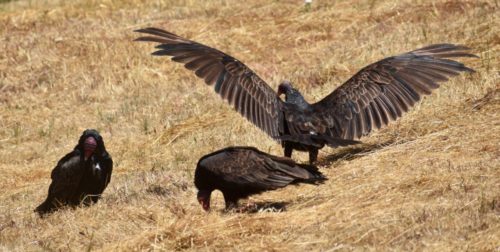
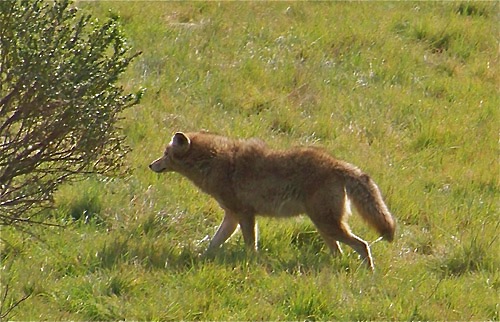
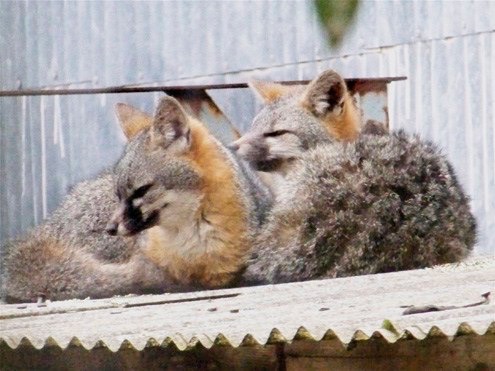
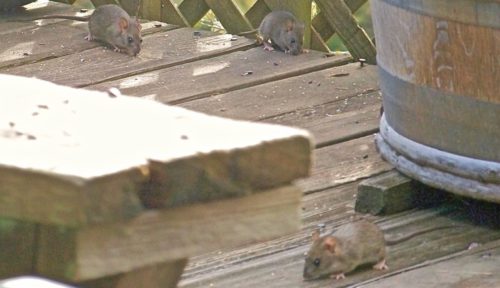
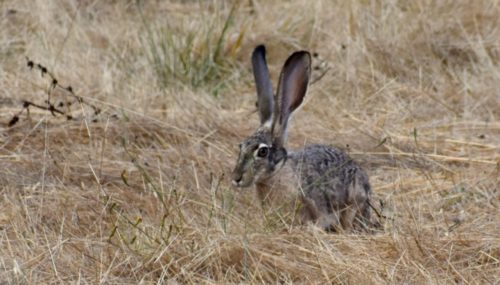
 lounge” of lizards. This is a blue-belly lizard on the wall of our cabin.
lounge” of lizards. This is a blue-belly lizard on the wall of our cabin.
